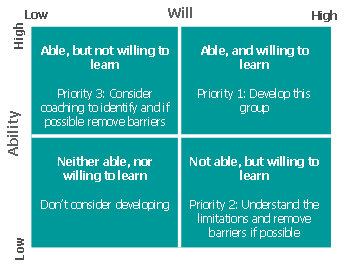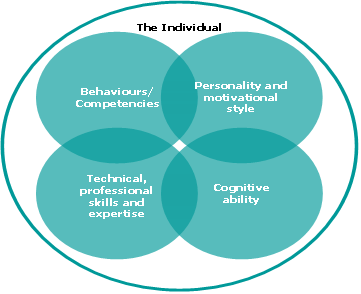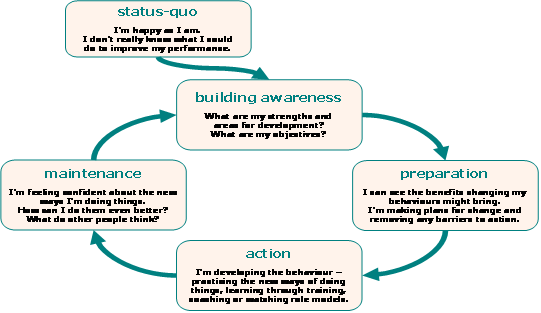
A guide to precision development
Author: Tiffany Bowles, senior consutant
As we see signs of the recession easing off, organisations are starting to breathe again and think about loosening their belts – but should they? Our view is no. Now more than ever organisations need to be focussed.
During the recession, those responsible for the people strategy came under increasing pressure to cut costs and ensure the organisation was operating efficiently. Budgets were cut, development activities halted and proving return on investment became even more essential. There’s no denying the recession had a negative impact on engagement, discretionary effort and productivity. Organisations now face the challenge of restoring normal service. The answer is not to throw money at the problem but to accurately prioritise and target development interventions where they are going to have the greatest impact.
It’s about being precise in five key ways:
- Precise about what to target. Which key people capabilities will help the organisation achieve its strategy?
- Precise about who to develop. Target the development opportunities on those who will benefit most
- Precise about how to develop. Ensure the development interventions have been designed to deliver an increase in capability
- Precise about the ongoing support of development. Support the developed afterwards, put a plan in place to ensure they can, and do use their new capabilities to benefit the organisation
- Precise about how to measure the impact on the individual and the organisation and the ROI
Be precise about what to target
This stage is about identifying the key people capabilities that will help the organisation drive its strategy forward to achieve its goals and objectives. This means that right from the very start you need to be clear about what the organisation’s strategy is so that you can keep checking back to ensure your solutions are going to precisely meet the needs of the organisation.
The key actions at this stage are to:
- Think to the future - Where does the organisation want to be, and what does it want to be doing in the next few years?
- Articulate the strategy - What is the organisation going to do to meet its goals and objectives?
- Analyse the people capability - What do the employees need to be doing, and what people skills are needed to make that happen? What knowledge, skills and attributes (KSAs) do they currently hold, and what might they need to develop? Is it a change in skills, knowledge or is it attributes? Pin it down to specific behaviours and outcomes. Something that can be measured. Remember, any development activity needs to be supported by good management and leadership skills. So don’t confine yourself to technical skills; consider how the managers within the organisation can lead their people through any change.
- Involve everyone - Communicate and consult from C and board level, through learning, development & HR stakeholders right the way down to the job holders and their managers. Having a common understanding of the strategy and the role each individual can play in helping to achieve it is crucial.
- Prioritise development activities - Focus your attention on those interventions that are going to have the biggest impact on achieving the organisation’s goals and objectives.
Be precise about who to target
Not everyone wants, needs or responds to development in the same way. Some are already achieving what needs to be done and more – these are your current high-performers who can help to move the organisation forward straight away and be your leaders of tomorrow. Others are raring to go, eager for every opportunity, but haven’t quite got the right skills yet, these are your potential high-performers. Others are happy to see things stay the same, minimally contributing at a just satisfactorily level, but with no discretionary effort – sometimes unflatteringly referred to as the ‘grey mass’. The final group are the underperformers – the interventions for whom need to centre initially around straight talking about expectations – after which development may or may not follow.
It is vital that you are precise about identifying the different types of individuals in the organisation. Focus on those who will give you a return for your investment, your current and potential high performers. Interventions that don’t meet the needs of the individual will fail to engage or motivate them to learn, so within this group focus on those you want to develop and target the development opportunities on them first.
- Will - Who has the desire to develop? They are by definition in the potential high-performer group but it is not a given that they will be in the current high performer group. Having thoroughly assessed your employees, you may be surprised where the strongest pockets of motivation to develop and contribute to the organisation lie.
- Ability - Why put the majority of your development budget towards a mediocre improvement in performance of ‘grey mass’ when we know that top talent outperforms the rest (‘The war for talent’¹) – instead identify the superstars – whichever category they are currently in, and invest in accelerating them instead.
So in summary you are looking at assessing a combination of who needs to develop, who can develop and who wants to develop. This is the group that should get the first piece of the investment pie, prioritising the current high performers, then the potential high performers before the more usually focused on ‘grey mass’. At a leading telecoms company for example, those who have attained the highest two levels in the Sales Academy are offered a choice of development interventions. Only the most motivated and dedicated are able to achieve these levels and the appetite to utilise the development is tangible.

How do you identify these people? Objective assessment is the key to obtaining reliable data on which to make decisions that are transparent and fair to those involved. Best Business Psychology practice advises that any assessment methodology used is empirically sound as well as tried and tested so you can be sure it is sufficiently precise. Bringing together the very best methods of assessment techniques also means that you can assess all of the facets of the individual in order to get a holistic view of the individuals in an organisation.
Be precise about how to develop
Having understood the ‘what’ and the ‘who’ the next step is to decide ‘how’ you are going to develop the individuals in the organisation. In order to be precise, and to have an impact, your approach needs to match the requirement. You’ll need to consider what it is that needs to be developed (knowledge, skills or attributes) and the readiness of the individuals.

- If it’s only knowledge that needs to be developed E-learning can be a quick and relatively cheap means of delivering information. A second option is formal training (classroom style, which offers the additional benefit of giving the employees an opportunity to discuss the information they need to learn about, but it can be costly in terms of time out of the business. Alternatively, if the knowledge exists in the organisation and needs to be shared, options include mentoring and internal knowledge transfer programmes. Both help to create ‘buy in’ in those involved, resulting in higher engagement levels and a sense of ownership for developing each other. Whatever the approach, the aim when developing knowledge is to get employees to not only understand the new information, but to be able to assimilate it with what they already know. It is rare that development is purely only about acquiring new knowledge and more likely that there is a need for developing the skills in applying it too.
- Developing skills is most effectively achieved when individuals have the opportunity to experience what it will feel like to perform them. This way they can test them out and see what works and what doesn’t. Again, it is ideal if someone internal can train up the employees. However training is a skilled job in itself, with the need to deliver information in a palatable way, identify when it has/has not hit the mark, alter the style of delivery accordingly and provide an environment conducive to learning (i.e. fun, upbeat and emotionally ֹsafe’). You’ll need to ask yourself - do the internal trainers/mentors have these skills? If not currently, can they be up-skilled or developed themselves to be able to deliver this training?
- Do you have to alter people at a fundamental level to make the desired development changes? No. it is neither ethical nor possible without a great deal of input. The key is for the employee to look at their current beliefs, attitudes and personality attributes and identify the ones that are helpful, and those that are not helpful in achieving what is required at work. This takes a particularly skilful intervention and is best conducted in a one to one arena with an experienced coach.
Often it is all three aspects of Knowledge, skills and attributes that need to be developed. Bringing them together and selecting the most appropriate methods can be a challenge. Our research shows that those who have done this the most successfully do typically follow an Academy type programme using a wide range of planned interventions ranging from coaching and mentoring, soft-skills training workshops, action learning sets, and additional role responsibilities or special projects. The benefits include a well structured process which offers a clear path of development according to the needs and requirements of both the individual and the organisation. There is status associated with the different levels or pathways of development and the purpose of the Academy is clearly communicated, valued by and invested in by the organisation. Our experience shows that such organisations outperform those who don’t use academies by 20%.

Whatever the approach, whether as part of a streamlined Academy programme or a one off intervention, it is only if the employee realises that a change is required and wants to make that change that the development will occur. Identifying the stage of change that an individual is at and then targeting the intervention appropriately is crucial. For example, training is not appropriate for individuals in the Status Quo stage as they are in denial over the need to make a change. What they need is the time, space and tools of self reflection (Building Awareness) to be able to make the step to the next stage - Preparation to take Action. Again, investing in assessing employees, for example using tools such as 360s, psychometrics and assessment centres to identify specific behavioural capabilities and preferences, is a useful way of building awareness of what stage they are at . This way, the type of intervention can be better matched to their needs.
Be precise about the ongoing support
Ways to support the employee after development include putting a plan in place to ensure they can, and do utilise the development. The mistake many organisations make is thinking that training is the end of the story. In fact post-development support is almost as crucial as the intervention itself - training plus coaching afterwards is over 70% more effective than training alone. Learning is an iterative, cyclical process which needs testing out in order to be fully embedded, i.e. learn something, try it out, get feedback, identify what does and doesn’t work, ask more questions, learn something extra, try that out etc. Having the opportunity to reflect back on the learning and how it is working makes the chances of long term implementation far more likely.
Ways to support the employee after development include:
- A follow up workshop with the tutor. This ensures that there is some accountability for the employee to report back as well as giving the opportunity to ask questions, clear up any misunderstandings and identify why something hasn’t worked. In addition it gives the opportunity to share success stories, learn from each other and from what has worked.
- Creating learning support (or buddy) groups in pairs or small groups also has the same benefit but lacks the tutor’s expertise (and cost).
- Challenging projects, supported by a mentor, that enable the employee to use their new knowledge, skills or attributes.
- One-to-one or group coaching. According to the CIPD’s 2007 Learning and Development survey, 63% of organisations use coaching. Often coaching doesn’t do anything more than speed up the process of change. This doesn’t sound like much until you consider that some people might not ever change without it – unwittingly going round their continuous cycle of confusion instead.
Be precise about the measuring impact
For you, measuring and monitoring the impact of your development interventions is essential. It ensures that the interventions are working in precisely the way you intended and will help you to secure the budget you need. It gives you the reassurance of knowing you have made the right decisions.
At an organisational level measuring the impact, and Return on Investment is vital. Understanding how an intervention has impacted upon sales, customer retention or productivity provides a clear message about the success of the interventions. However, in addition to considering the more obvious hard measures such as sales, revenue and productivity, it is also important to utilise softer measures such as customer satisfaction and engagement scores. We know from the service value chain model, that an organisation’s profit is linked to employee engagement via high levels of customer service. Engagement results from feeling valued, having a sense of pride and job satisfaction (amongst other things). So measuring employees’ commitment and satisfaction with their job, manager and development opportunities for example will also be an indicator of how much discretionary effort you are likely to be getting from them.
It is important to not only find out what difference the intervention has made but also how, so that you can enhance and improve the intervention and maximise its impact. Kirkpatrick’s learning evaluation theory² outlines 4 stages of measurement. Whilst the fourth level seeks to understand the impact on the organisation, the first three levels seek to understand: what the participant thought and felt about the training; the increased knowledge or capability; and the extent of the behaviour and capability improvement and how this has been implemented back in the work environment.
A word of caution though: Be careful when assuming causality on ROI measures - for example, if sales have gone up, is this because of the customer sales training the employees experienced or because the economy is picking up and everyone is experiencing better sales? People and situations are too complex to definitively attribute a ROI to a people intervention alone so a range of measures should be used wisely.
In summary
So, to recap, in these difficult times it is even more important to be precise in order to ensure maximum and efficient return on investment. Have a good look at your organisation. Do the decision makers have the skills in order to make such precise and objective decisions about who, what, why and how to develop your employees? If not, ensure that those who are invited to help are experienced practitioners with a track record in helping organisations change and develop, having used a wide range of assessment, design and delivery methodology. In practice this means they are likely to have a grounding in business psychology as well as many years of business experience.
¹Michaels E., Handfield-Jones H., Axelrod B., ‘the war for talent’, McKinsey and Company, 2001
²Donald L. Kirkpatrick, James D. Kirkpatrick, ‘Evaluating Training programs: The four levels’, Berrett-Koeh, 2006
Would you like to discuss this paper with one of our consultants?
Email us

